Today’s article was prompted by The Now Revolution co-author Jay Baer’s blog post entitled The 6 Step Process for Measuring Social Media. Consider the following 5 sections a complement to the social media measurement discussion in the business world. Bookmark it, pass it on, and feel free to ask questions in the comment area if something isn’t clear.
Let me explain, for anyone who is still confused about it, how to properly think about the integration of social media measurement into business measurement. This applies to the way social media measurement is applied to every business activity social media touches, from short-term product awareness campaigns to long term customer retention programs.
To make things simple, I will make use of a few diagrams to illustrate key concepts everyone who touches social media in the business world absolutely needs to understand.
Ready? Here we go:
1. Measuring Social Media: Activity and outcomes.
The above image shows the relationship between an activity and the measurable impact of that activity on social media channels. The ripples represent every type of outcome – or effect – produced by that activity, which can be measured by observing, then quantifying certain key behaviors on social media channels. A few examples:
- Retweets
- Likes
- Follows
- Shares
- Comments
- Mentions
- Sentiment
When social media “experts” and digital agencies that provide social media services talk about social media measurement, this is what they are talking about.
So far so good. The trick is to not stop there.
2. Measuring Social Media: Activity and outcomes beyond social media channels
Now that we have looked at basic “social media measurement,” let us look at it side-by-side with business measurement – that is to say, with metrics that existed long before social media ever came on the scene. A few examples:
- Net new customers
- Changes in buy rate
- Loyalty metrics
- Word of mouth
- New product sales
- Customer satisfaction
- Increased operational efficiency
- New online orders
- Traffic to brick & mortar stores
- R.O.I. (you knew it was coming.)
In other words, the types of metrics that indicate to a business unit or executive team whether or not the activities they have funded and are currently managing are having an effect on the business. These types of metrics are represented in the above diagram by the black ripples.
To some extent, you can also include a sub-category of metrics not directly related to business measurement but that also exist outside of the realm of social media measurement. These types of metrics typically relate to other types of marketing & communications media such as print, TV, radio and even the traditional web. A few examples:
- Impressions
- Unique visitors
- Bounce rate
- Cost Per Impression (CPI)
These types of metrics, for the sake of this post – which aims to clarify the difference between social media measurement and social media measurement within the broader context of business measurement – would also be represented by some of the black ripples in the above diagram.
3. Understanding that “measuring social media” is a terribly limited digital play.
If you remember only one thing from this article, let it be this: Only measuring “social media” metrics, as if in a vacuum, leads absolutely nowhere. Sure, if your objective is to build a “personal brand,” boost your “influence” rankings in order to score more goodies from buzz marketing firms that do “blogger outreach,” then those social media metrics are everything. Chasing those followers, collecting likes and retweets, meeting that 500 comments quota of comments on Quora every day, and religiously checking your Klout score and Twittergrader ranking every twenty minutes is your life.
But if you are a business, that is to say, a company with employees, products, payroll, a receptionist and a parking lot, the role that social media measurement plays in your universe is not exactly the same as that of a semi-professional blogger trying to tweak their SEO and game blogger outreach programs. These two universes are completely different. Their objectives are completely different. Their relationships with measurement are completely different.
Understanding this is critical. Bloggers with no real business management experience tend to have a very difficult time bridging the strategic gap between their limited digital endeavors and the operational needs and wants of organizations whose KPIs are not rooted in Facebook, Twitter and Youtube.
It should come as no surprise that the vast majority of social media “experts” and “gurus” – being first and foremost bloggers with experience in navigating affiliate marketing programs, and a commensurate focus on SEO and social media “influence” gaming models in support of their “personal brand” – tend to see the world through that specific prism. The problem however is this: Their focus on social media measurement may be spot on when advising other would-be bloggers, but it is completely off target when advising business clients whose business models are not entirely based on selling advertising on a website and scoring goodies from advertisers in exchange for positive reviews and buzz.
In other words, when social media “experts” keep telling you how to “properly” measure social media – as if your measurement software didn’t already do this for you automatically – consider this an indication that they have absolutely nothing else to talk about when it comes to social media integration into your business. Their understanding of social media activity and measurement is entirely founded on their own experience as a blogger, and not – unfortunately – on the experience of the business managers they aim to advise, whose objectives and targets have little to do with how many fans and followers and likes they manage to collect from month to month.
One of my biggest areas of frustration for the last few years – and one of the principal reasons why social media has been so poorly integrated into the business world until now – has been the ease with which bloggers with little to no business management experience have hijacked the social media “thought leadership” world. Many of them would not be qualified to run an IT department for the average medium-sized business, much less help direct the strategy of a digital marketing department, customer loyalty program or business development group. Their understanding of the most basic, rudimentary business principles (like R.O.I.) is as painfully lacking as their dangerous lack of practical operational experience – in change management, for example – without which social media theory cannot be aptly put into practice. Yet here we are, or rather here companies are – many of which are listed in the Fortune 500, listening to bad advice from the most inexperienced business “strategists” on the planet, and trying to apply it – in vain – to their businesses.
If you are still wondering why your social media program is not bearing fruit, or if you are still confused by social media measurement, this is the reason why.

The tragic irony of the general state of confusion created by this army of so-called experts is that in spite of everything, social media measurement is not complicated. If you can type a password into a box, navigate a multiple-choice questionnaire and use your mouse to click on a “generate report” button, you too can measure social media. All you need is the right piece of measurement software, an internet connection and a pulse. You don’t even need to know how to send a tweet to do it.
I am not kidding. A monkey could do this.
The sooner business managers, company executives and agency principals stop listening to social media douchebags, the faster social media will be integrated (smoothly and effectively) into everyone’s business models. Don’t limit yourself to measuring social media. Stop listening to business advice from bloggers with no business experience. And don’t buy into the notion that because social media is new and digital, it is complicated. Social media is easy. Social media measurement – by itself – is easy. It takes work and diligence and clear vision, but all in all, it doesn’t take a brain surgeon to figure it out.
4. Once you get rid of the monkey noises, you make room for the simplicity of the (social) business measurement model.
The above diagram illustrates both the measurable social media outcomes (in orange) and the measurable business outcomes (in black), based on an activity (the solid orange ball). We have covered this earlier in this article. By now, you should understand two key principles:
1. Measuring only social media outcomes (or measuring them separately from business outcomes) won’t get you very far. It’s what you do your first month. Then what?
2. Only by establishing a relationship between social media metrics and business metrics will you be able to gauge both the impact and value (including but not limited to R.O.I.) of social media on your campaigns, programs and overall business.
How you connect social media outcomes/metrics to business outcomes/metrics is covered elsewhere on this blog and of course in the Social Media ROI book, but if this diagram doesn’t confuse you, try to conceptualize the relationship between social media outcomes with business outcomes by observing the intersect points between the orange ripples and black ripples. (See above diagram.) Your investigation of the correlation between the two will always begin there.
5. One final tip: Turning your integrated measurement model into a social media tactical plan.
These diagrams only serve to illustrate how you should think about social media measurement in conjunction with business measurement. That’s it. But if you take a step back and look at the interaction between social media outcomes (measurable behaviors in social media channels resulting from a specific activity or event) and measurable business outcomes (measurable behaviors resulting from a series of activities and events), you can start to work your way backwards from outcome to activity, which is to say from measurable behavior to behavioral trigger.
By looking at the impact that certain activities (triggers) affect consumer behaviors (mentions, retweets, purchasing habits, word-of-mouth, etc.) you can begin to gauge what works and what doesn’t. Integrated measurement of both social media and business metrics in this context – as a tactical real-time diagnostic tool – is far more valuable to an organization than a measurement practice that solely focuses on reporting changes in followers, shares and likes. This illustrates the difference in value between a truly integrated measurement model and a “social media measurement” model. One produces important insights while the other merely reports the obvious.
I hope that helps.
* * *
Three quick little announcements in case you are hungry for more:
One – If you haven’t read “Social Media ROI: Managing and measuring social media efforts in your organization” yet, you will find 300 pages of insights with which to complement this article. It won’t answer all of your questions, but it will answer many of them. If anything, the book is a pretty solid reference guide for anyone responsible for a social media program or campaign. It also makes a great gift to your boss if you want him or her to finally understand how this social media stuff works for companies.
You can sample a free chapter and find out where to buy the book by checking out www.smroi.net.
Two – If you, your agency or your client plan on attending the Cannes Lions from June 19-25 and want to participate in a small but informative 2-hour session about social media integration, measurement, strategy, etc. let me know. I just found out that I will be in Cannes during the festivals, so we can set something up – either a private session, or a small informal discussion with no more than 6-7 people. First come, first served.
You can send me an email, a note via LinkedIn, a Twitter DM, or a facebook message if you want to find out more. (The right hand side of the screen should provide you with my contact information.)
Three – If the book isn’t enough and you can’t make it to Cannes later this month, you can sign up for a half day of workshops in Antwerp (Belgium) on 30 June. (Right after the Lions.) The 5 one-hour sessions will begin with an executive briefing on social media strategy and integration, followed by a best practices session on building a social media-ready marketing program, followed by a PR-friendly session on digital brand management, digital reputation management and real-time crisis management, followed by a session on social media and business measurement (half R.O.I., half not R.O.I.). We will cap off the afternoon with a full hour of open Q&A. As much as like rushing through questions in 5-10 minutes at the end of a presentation, wouldn’t it be nice to devote an entire hour to an audience’s questions? Of course it would. We’re going to give it a try. Find out more program details here. Think of it as a mini Red Chair.
The cool thing about this structure is that you are free to attend the sessions that are of interest to you, and go check your emails or make a few phone if one or two of the sessions aren’t as important. The price is the same whether you attend one or all five, and we will have a 15 minute break between each one.
The afternoon of workshops is part of Social Media Day Antwerp (the Belgian arm of Mashable’s global Social Media Day event), and I can’t help but notice that the price of tickets is ridiculously low for what is being offered. The early bird pricing is… well, nuts. Anyone can afford to come, which is a rare thing these days. (Big props to the organizers for making the event so accessible.)
The event is divided into 2 parts: The workshop in the afternoon, and the big Belgian style party in the evening. You can register for one or both (do both).
Register here: Social Media Day – Antwerp
My advice: Sign up while there are still seats available, and before #smdaybe organizers realize they forgot to add a zero at the end of the ticket prices. 😀
Cheers,
Olivier.
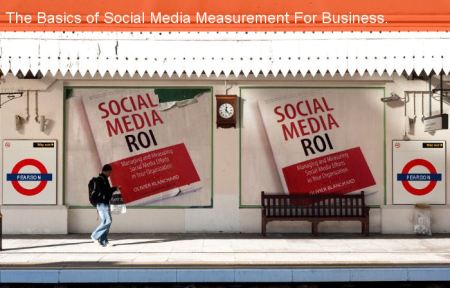
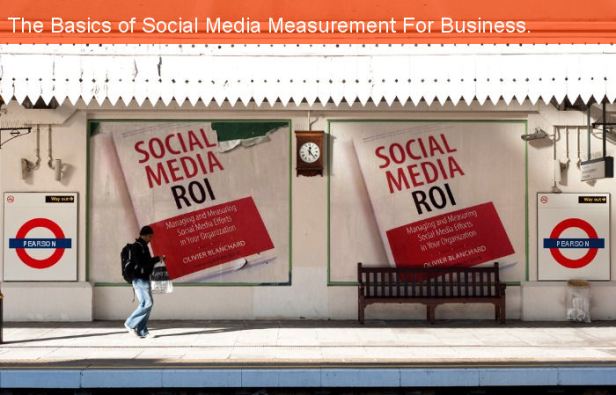
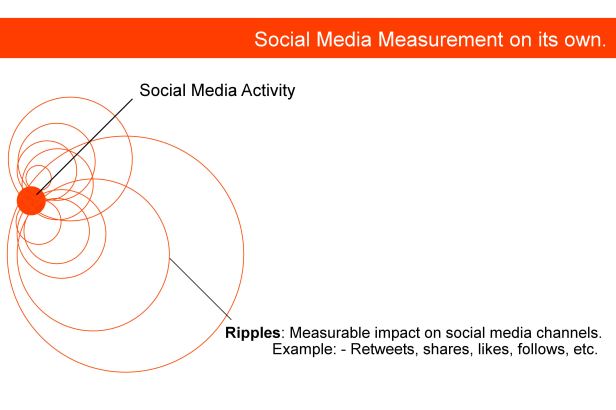
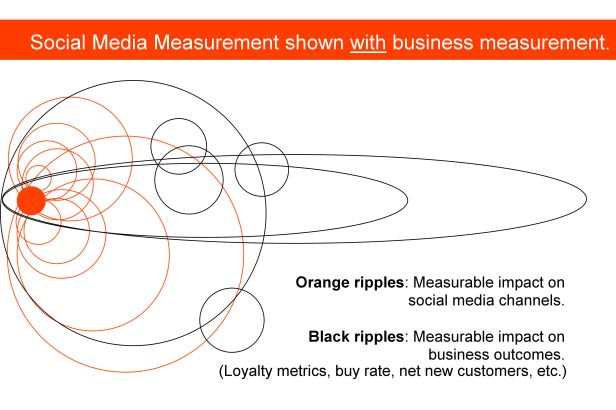

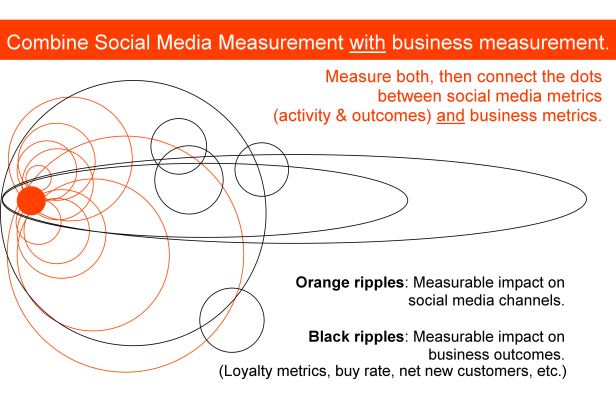
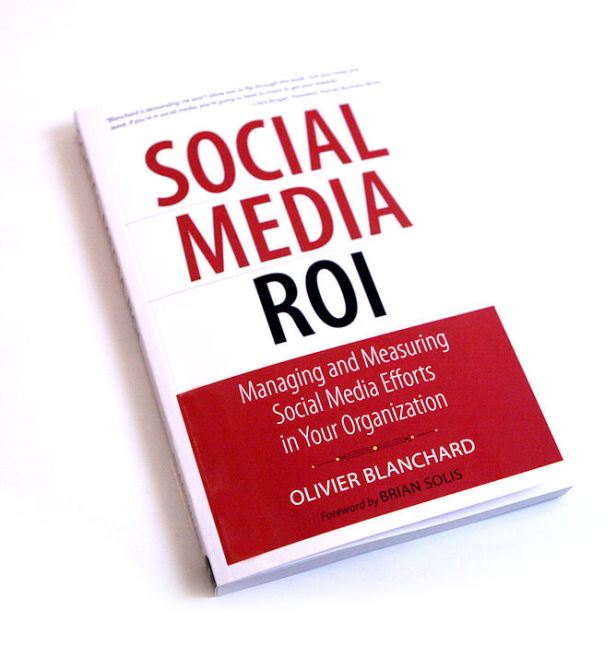



Would you recommend that business owners hire someone to manage social media then or just have an in-house person tweeting and facebooking from time to time?
I’ve had my clients do both and found that social media can both improve or kill your business depending on how it’s used. If it is used as simply a way of talking at prospects instead of connecting with prospects, it does nothing different than TV. However when it is used to share insight into the industry and help people connect with the business owner, further trust is built and I feel that is impossible to measure the full ripples of what is created.
Right. So every company is going to be different. Some need to hire someone and bring them in. Others need to identify someone inside the company who can be responsible for the development of the social media program. And others yet need to start by working with outside agencies or contractors.
In many cases, as the program begins to take shape and spreads across several departments or groups, you start to see the emergence of layers of specialization. Before long, you have outside people being brought in to perform specific tasks, outside agencies handling certain aspects of the social media program, and in-house development and training of staff.
You just need to figure out what makes the most sense for a company at any given time, based on what they want to accomplish. You could start by training customer service reps to use Twitter, or introduce product managers to Facebook pages… It’s always different.
This post was really helpful for me, as a current PR student studying social media measurements. The concept of metrics has been a bit confusing to me. I need to do more research to get a better grasp of the concept. I did find it helpful that you looked at business metrics and social media metrics as separate pieces. I appreciated the detailed diagrams as well.
Web metrics are one thing. There are other metrics too. Don’t ever allow yourself to become rigid when it comes to measuring the impact of what you do. Get creative. An agency in Canada partners with the water utilities to put water usage on a timeline. You know why? They want to see how many people go to the bathroom during hockey games and when they do it. Why do they want to do that? To determine which ads are being seen and which ads are being missed. Clever, huh? Books will give you the basics. There’s always a better, smarter, cooler way to go find out what you want to know.
Thanks for a great post. Great balance of the practical and visionary. @MargaretMolloy
Nicely done. I like the charts. The best part is about triggers. That’s really the whole secret, because true, linear ROI calculation is often hampered by lack of visibility at the transaction layer.
It’s almost always about correlation. What is a valid correlation (the intersection points you mention) versus an invalid correlation is the sometimes tricky element. There’s a lot of cause and effect confusion.
Also, despite the fact it’s absolutely the right way to roll, the vast majority of companies – including Fortune 500 – do not run correlation studies on their other forms of marketing, much less social media. Consumer products companies are more likely to be using these principles, I find.
I agree that social media-only measurement is at best half the story. It’s not about being good at social media – or direct mail, event sponsorship, or anything else. It’s about being good at business because of those things.
Because my experience with hundreds of companies has shown me that correlation and true ROI are sadly still foreign to most, I prefer to give people some logic around social media-only metrics, and then tie it back to biz metrics via correlation.
You’ve always encouraged people to go right to correlation and ROI, and I respect that approach. I prefer to talk about social media only metrics first, recognizing that’s the limited prism through which most people are looking at this topic, and then elevating the conversation.
That’s how I structured the presentation and post (thanks for the link). I wish I had the audio file, as I did a lot of off-slide exhortation of tying social to biz metrics. Thanks for your good work here in making that connection more visual and urgent.
Right. Intent is everything. Trying to correlate ROI at random by tying loose outcomes to activities with uncertain objectives is a pretty weak methodology. The trick is often to aim the initial activity (the trigger) at a specific group of responses and outcomes, and measure the response based on a range of expectations. If you do that, measurement of action to reaction, therefore investment to return, becomes much simpler.
If my activity is aimed at increasing buy-rate for Gizmo A this quarter, what I will measure is changes in behavior leading to an increase in buy rate for Gizmo A. I don’t have to guess anymore. I know what to look for.
As an aside, marketing, customer service, recruiting, etc. funded and managed without a clear focus (one towards affecting certain behaviors) is just crap business. It’s lazy. Every campaign, every program, every activity should have clear objectives, which (from a macro perspective) are aimed at either acquiring new customers, developing existing customers, or retaining existing customers. From a micro perspective, the behaviors (falling under one of these three categories) become more specific.
Cheers, man.
Nice post, Oliver. I like the way that you separate business metrics from social media metrics. The approach I’ve taken is to define success criteria for my clients, those criteria almost always being related to the bottom-line. From there, we define what business metrics we need (i.e., what has to be measured) and then what social media metrics we need. Knowing all of that also helps define tools requirements and processes.
It often turns out that the traditional social media metrics (followers, RTs, etc.) are better used as what I call “interim measures,” ways to track progress toward the success criteria.
In any case, I really appreciate the detailed, sensible approach you’ve outlined!
A lot of good points in here, but it’s worth noting that easy point scoring against ‘social media experts who were just bloggers’ ignores quite a number of people who might have social media as one area of expertise, but have also worked in marketing for large companies or agencies, and have a very good understanding of business processes and ROI.
Personally I’m getting as tired of people typecasting anyone listing socal media as a specialism together as I am by bad social media practitioners.
Incidentally, when it comes to measurement and tools, and ‘your measurement tool doing it automatically’ – that isn’t a simple case. Any measurement tool needs to be evaluated to ensure it’s properly installed and measuring the right things, whether that’s web analytics software or social media measurement tools. I’ve seen major websites both under and over report due to the simplest of errors (Double tagging pages, for example), and social media measurement does involve a fair amount of keyword research and boolean filtering depending on your brand name (i.e. getting mentions of Orange the mobile phone companies, and not the fruit or colour).
Considering that I have to explain R.O.I. (and business processes) to well over 95% of marketing folks (and even more when they are in social media roles) I run into these days, I can’t say I share your perspective on the state of social media adoption (or savvy) in the agency OR Fortune 500 worlds. The “typecasting,” if it may be called that, isn’t cynical or an exaggeration. Sadly, it is still mostly deserved.
Fact: For every manager or executive responsible for a social media program who knows what he or she is doing, there are easily fifty who don’t but either pretend to, or think they do.
As things are today, however, the majority of so-called “thought leaders” in the social media space don’t have business management backgrounds. They have not been responsible for a P&L. They haven’t been involved with change management. Their operational background is so limited that they find themselves completely unprepared to anticipate and manage the complexities of integrating social media into an organization’s operations. It’s a huge problem, and frankly, I don’t know how to fix it. But until we do, social media will continue to be misunderstood, underutilized, mismanaged and clumsily integrated – and that, Dan, is a damn shame.
Cheers.
Interesting Pic how you made your influence get Paris to promote your book. I guess ir more on measuring her influence for increasing your personal brands reach. (just kidding).
I think that here is where I have an issue with so many of the consultants like you said they are mostly bloggers selling ads or affiliate marketing. I had not seen it that way until I read this post.
In my case working on tying business objectives to IT efforts for many large companies and working for a Big 4 accounting firm on the Business consulting side helps me bridge that gap.
The problem is the part where they keep on listening to the wrong people because just like some technology vendors offer you a one button quick solution for all your business problems (which does not exist). These so called social media experts end up offering and making the client think that what they do will get them to the promised land (when the social media expert does not even no where the promised land is located).
I think reading this post makes it a great complement to most of the stuff in your book.
Thanks. Yeah, I wish I had thought of explaining this in the book as well. Or at least in this way. Part 2? 😉
Great information. Social media measurement is so much more than tracking fans and followers. Social media isn’t going away, so finding people who are skilled in helping businesses track their social media presence and reputation are valuable.
Olivier, thanks for this excellent post. You have a gift for cutting through confusion and communicating your concepts very precisely.
I don’t think anyone can put up a serious defense to your claim that there is too little attention paid to business metrics, and/or to tying what you term as “activity metrics” to business outcomes. No doubt this is true — not just for social media but for many other types of marketing.
But the reason why this happens is that connecting those isn’t all that simple. True, all or at least most of the data required is available, but cobbling all of that disparate data together into something that can be properly analyzed at a glance on an ongoing basis takes time and money (especially if you are trying to get a fix on your overall investment in social media as opposed to a specific campaign).
The reality is that many marketers are in the experimental stages of social media. What this means on a practical level is that they do not have the tools and the resources in place to make connections between activity metrics and business outcomes. So they settle for what they can measure – those “activity metrics”, which it turns out can at least be useful as navigational indicators of how things are going at the beginning of the buy funnel (reach, active awareness, engagement).
You are right that connecting the dots between what you term as activity metrics and business metrics should be a focus (at least I hope you are right because I’ve spent the past 2 years trying to build a product that will make it easier). But whether it will be done boils down to time and resources – in other words, costs — for most companies.
Even at the campaign level, the cost to really measure something right can be prohibitive. I think back to your excellent post about McDonalds and the Foursquare campaign: If the McDonalds team didn’t spend the bucks to 1.) Take a baseline measurement of foot traffic prior to pulling the trigger on their campaign, and 2.) Measure foot traffic during the campaign, can we really expect an SMB to make that investment? (Although in the McDonalds case perhaps it was lack of foresight, not resources.)
I hope you will continue to address measurement issues. Thanks again for a very insightful post.
Tools Don’t Pick Metrics
It’s terrific that the marketplace is bloated with companies that are offering whiz bang software to listen, respond, measure, and analyze social media. It’s the fanciest bunch of
calculators ever devised, and every company in the space tries to differentiate by chopping up the same pile of data in visually compelling ways.
Olivier, Recently I have started reading your master pieces of social media articles, hitting the tip of the iceberg.
I really wish to see more content from you with real life examples on social media measurements and business measurements integration with numbers you would have done recently.
@JayBaer 6 step matrix is again cool, but require more elaboration for monkeys as Olivier rightly said. Jay can we have more from you Google +2 for you who have given great food for thought.
Well articulated post Olivier. Not to echo too many of the great comments above, but it is amazing how many organizations haven’t even thought about what to measure and how it can be used to establish a meaningful metric. Understanding what you are trying to accomplish and why gives a lot of clarity to develop a how. The diagrams were a nice visual, thanks for moving things toward the common denominator.
Great post, I really appreciate and agree with your perpsective on this. Basically measuring social media will tell you how you are doing in…social media – which really isn’t all that helpful to someone managing a P&L. Of course, the challenge is in the details of the measurement, as other comments have mentioned, integrating the social media results with your business metrics is not a simple task. It takes some data and analytic skills that don’t exist in the social media group of many organizations. However, those skills do exists in most marketing departments. I think we will see more integrated measurement of social media as we see more integration of social media within organizations. The great thing that the social media ‘experts’ have brought to this space is the recognition of it’s importance within organizations. This rasied the awareness and now we are seeing social media become more integrated into organizations, which is forcing social media to be looked and evaluated as part of the wider business. Your post does a great job detailing this need.
Last point, another area where we in the social media space need to do a better job is educating why investing in social media is better for a business than investing dollars elsewhere. We don’t talk enough about this; the typical marketing exec has to decide why to spend money in social media vs TV vs Direct Mail vs Search, etc… Measuring Social Media in a vacuum and even showing ROI of social media in that vacuum doesn’t help the exec make this decision. Even with positive ROI from social media why does it makes sense to spend my dollars there vs other areas? The fact is the Social Media investment has a compelling case, it can extend dollars spent in other channels, it can use brand advocates to spread your messsage, amongst many other well documented benefits. We need to show that social media is valuable part of the marketing mix and great way to do this is to measure social media in context of wider business metrics. It’s a challenging proposition, but one which must be overcome, imo.
Scott Briggs
@scott_briggs
I think you’ll find this one funny: http://www.thecommcouch.com/?p=373
What a fantastic article. It’s so easy to DO social media, it’s second nature, but measuring is a whole other issue. I work with a non-profit that, without many resources, needs to know more about the behaviors of it’s “fans” to convert membership. Thanks a lot for the article Oliver!
You ought to be a part of a contest for one of the highest quality sites on the net. I most certainly will highly recommend this blog!